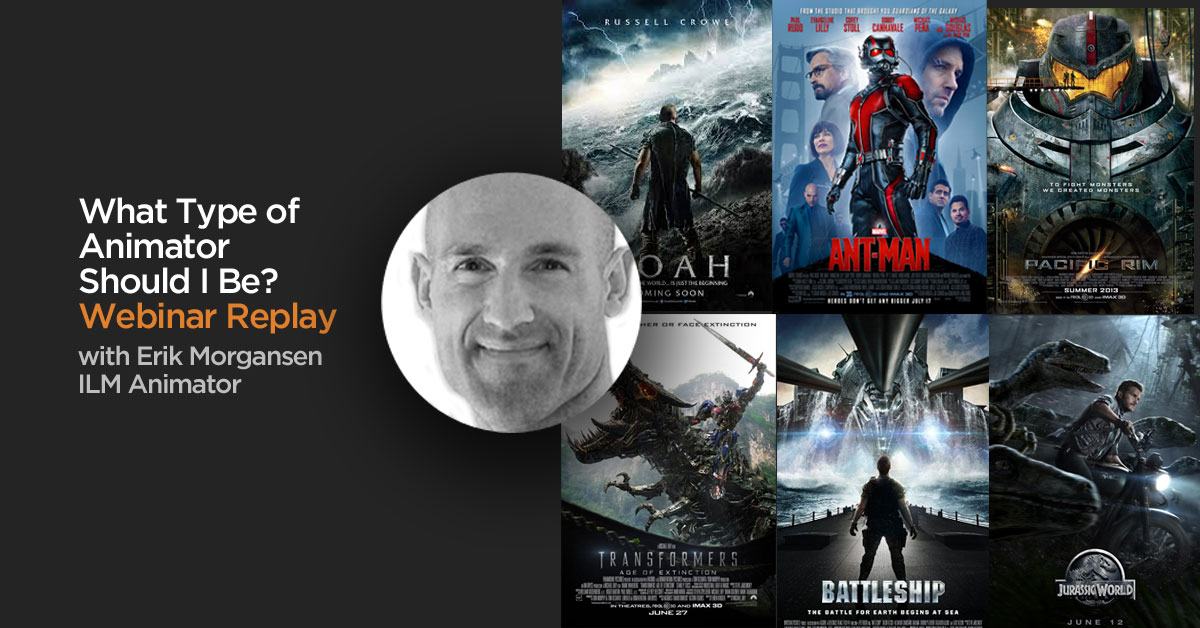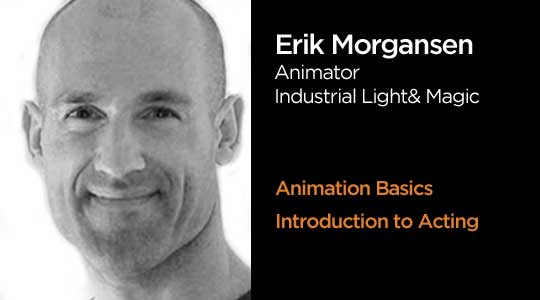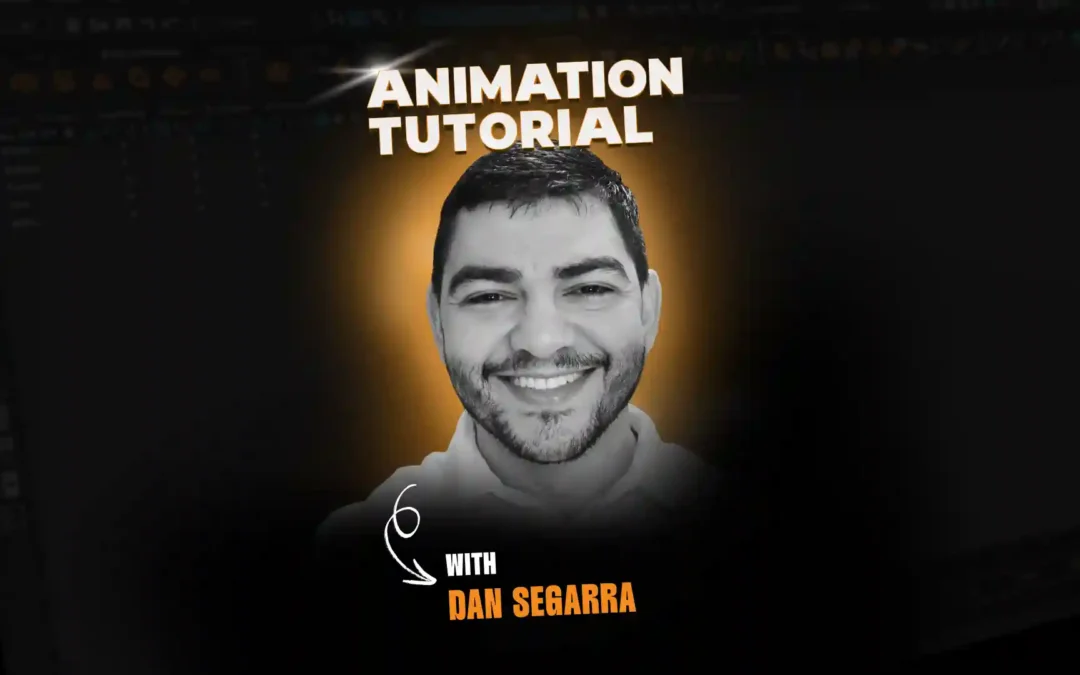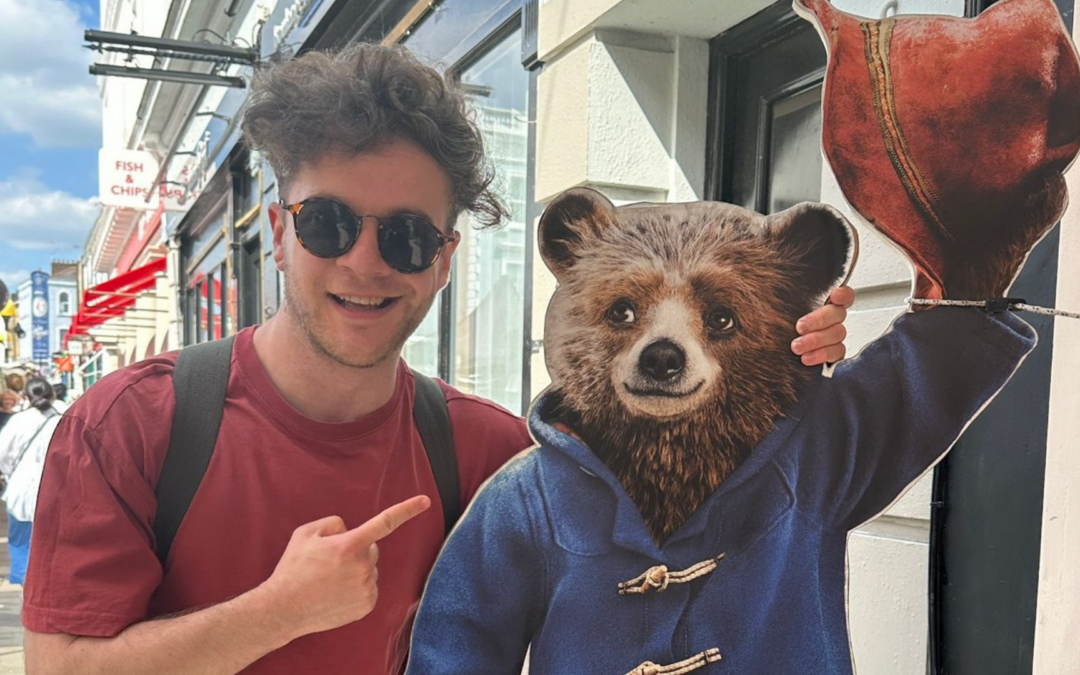
Last week, we had an INCREDIBLE opportunity to link up with professional Industrial Light & Magic Animator, Erik Morgansen, for our What Type of Animator Should I Be? Webinar. Aspiring animators as well as students at different stages of their careers stopped by and made an awesome turnout! This was such an inspiring webinar that we decided to catch up with Erik right after for some additional questions we thought would be applicable to all students and aspiring animators out there, no matter what part of the animation journey you’re at. You’ll soon find that in whichever track you decide to pursue, anything is possible in the world of animation.
So, without further ado, read on and become inspired!
– The Animation Mentor Crew
ANIMATION MENTOR: What kind of work do you need when submitting your demo reel to the various types of studios?
ERIK: With all of these, the answer is similar in the sense that you want to customize your real at least for the studio, and at best for the specific project that you’d be staffed on (sometimes it’s not possible to know this, but if you can, find out!). In other words, if you were applying to DreamWorks for a sequel to How to Train your Dragon, you’d want to include some creature animation on your reel that shows you can do weight/physics/and character performances. You’d also want to show some human-type acting and action performances.
What if you don’t have any of those specific things to show? You can begin to get a little creative with your reel submission. Maybe you’ve got some bird animations that show you can do flight patterns or wing cycles? Maybe you’ve got some very cartoony pantomime stuff with a very stylized human character?
At some point you’ll need to consider what is your most relevant work and what is your best work. Ideally you will show the work that you consider to be your best. If you have a shot that specifically applies to a show that you want to get staffed-on, and you think it’s not the best representation of your skills, you may need to make a judgement call about including it.
As for the specific types of studios you may be applying to, here are some thoughts:
GAMES:
For in-game animation, cycles are definitely good. Again you want to consider the type of game, is it Halo or Mario Bros? If it’s a realistic looking game, having realistic human characters doing naturalistic human action is going to be most helpful to show. For a cartoon style game, obviously more stylized squash-and-stretch motion is best.
If you are doing cinematics, same concept applies, you just may want to show less cycles and more complete shots with multiple characters, action, and acting.
ANIMATION STUDIO:
For feature animation work, showing that you can do acting performances will likely be the most helpful. These films are all about telling stories. Characters emoting in both subtle and broad ways (both comedic and dramatic) are typically what make up the majority of the footage of these films. There’s always a ton of other stuff (fights, chases, slapstick or pantomime), but these movies always are centered around moving a narrative forward by characters saying and doing things, so I’d focus there first.
Another thought to consider is that ‘family’ movies are often times being produced at these types of studios. It’s best to leave crude jokes and profanity out of your reel when submitting here. I’ve seen this really work against people in the past.
VFX STUDIO:
Realistic looking motion with a lot of detail is the key here. You do have a bit of range as well (depending on the type of film you are applying to work on). You may be working specifically on aerial or space battles with flying vehicles, horses crossing a deep river, digital-doubles running from explosions, or robots fighting. In each case you’ll want to show very realistic weight and physics and have some ‘dirt’ (or realistic/organic looking detail).
BOUTIQUE STUDIO:
This is a place where you can thrive more as a generalist, sometimes even between disciples. You are also likely to work on different styles of animation as well. You should be able to get away with showing a more varied reel here (a mix of stylized and more realistic work). You may even benefit from showing rigging, modeling, simulation, and texturing and lighting skills.
Again, as with all of these types of studios, you’ll want to find out specifically the type of project or role they are hiring for and design your reel around that as much as you possibly can.
ANIMATION MENTOR: You had suggested to try every type of animation and find what type of animator you could be. How should one get started? (ex. Short film, taking courses, tutorials, etc.)
ERIK: Yes! Those are all good suggestions. Getting mentorship of some kind is really important as well (either in this program or by some other means). A big part of what you are doing when you develop your skills as an animator is developing your ‘eye’, or your critical sensibility surrounding your effectiveness in expressing yourself through this medium. Jeez, did I just type that? In any case, I think you know what I mean. When you look at a shot in progress, can you see the problem areas with timing and spacing? Are there places where you can see that the attitude can be stronger or that you need more texture or energy?
You can get a huge jump on this by watching other really experienced animators critique your work. I remember the first time a really accomplished anim supervisor with a 2d background stepped through one of my shots and drew-over my work on 1’s, I was completely floored. At that point, I had no idea that people scrutinized their work to that level of detail. It completely changed the way that I’ve approached my work ever since. I’ve had countless other experiences like that in my career as I’ve learned this craft from other people. I really doubt that I could have ever arrived at any of these lessons if I’d simply looked at books, or online tutorials, or studied other people’s work.
ANIMATION MENTOR: You highlighted that mentorship is crucial in really grasping and understanding the art of animation – what kind of mentor are you and what is your teaching philosophy?
ERIK: My main approach to mentoring is to try to give students a clear picture of what it’s like to work in this industry. This is what I feel like I didn’t have access to when I was first learning how to animate, and what proved to be most valuable when I did finally begin working with people who had a lot of experience.
I make a point of always relating the assignments to the kinds of expectations you’ll face when you are working professionally. When I do critiques, I look at the work from this perspective as well. Directors have specific things that they expect from us as storytellers, so I steer students in a direction that would best demonstrate these. Animation supervisors have specific things they want to see in our work (weight, timing, etc), but they also have specific expectations about how we work. Do we show our blocking early? Do we include all of our ideas in the rough passes? Do we ask the right kinds of questions? Show up to dailies on time? Get our shots in on time, or let production know ahead of time if there’s going to be a delay?
There aren’t necessarily any right or wrong answers when it comes to doing the assignments in AM, but there are ways that are going to fulfill the requirements of being a professional animator better than others. I’m either trying to steer students in that direction, or making it clear that they have a choice, but one way will make for a better presentation when they are looking for a job.
Beyond that, unless a student is really stuck and asking for a lot of help with their story, I’m really hands-off. I want students to feel like they own their shots, and I’m just here for guidance. People do better work in that kind of scenario. The best directors and animation supervisors that I’ve worked with all do this.
ANIMATION MENTOR: In your opinion, what are the most common mistakes that students consistently do? What is your advice on how to counteract them?
ERIK: From a technical standpoint, students are usually struggling with getting enough variation in the timing of the various parts of the body. It’s common to see the hip and chest and arms all moving as one unit for at least part of a shot. I often see action that either starts or stops without enough anticipation or follow-through. Parts of the body sticking in space for many frames is really common too.
To solve this, It’s helpful to think about the hierarchy of the muscle systems in the body. Big muscles more slower than small ones. Eyes and eyelids have tiny muscles that move really fast. The muscles around the hip are much bigger, move more slowly, take longer to get going and to stop moving. You just need to make a decision about what will be driving your action and then plan ahead so that it feels like the whole body is involved, and each part is moving at it’s own speed. It may sound like I’m oversimplifying it, but that’s really the key.
The proportion of energy is important as well. If an action is broad and violent, it will need a bigger anticipation than one that is contained and casual. Again, sounds simple but you can really boil it down to these couple of things and mechanically your motion will look good.
From a storytelling standpoint, getting the eye-direction working seems to be the biggest one. It’s one of the clearest things that gives the audience information about what your character’s intention is. I find that I’m usually giving students notes on eye-direction up to the end of the assignment.
For this it’s really important to know your character and understand the situation that they are in. You need to approach this part of your work the same way that an actor would and really get in the skin of your character. Know what they want and how they relate to the people or environment around them. Know why they are doing or saying something. Know the point of the shot. This is really a specific case-by-case problem.
ANIMATION MENTOR: What is the most gratifying aspect of being a mentor? Do you learn from the students?
ERIK: Yes, I absolutely learn from students and from the process of being a Mentor.
The previous question about common mistakes is a good example. I’ve found that it’s much easier for me to anticipate the kinds of mistakes I’ll make in my own shots after watching students struggle with them a thousand times. It’s also really easy for me to fix them after giving similar direction to students so many times.
Mentoring has made it much easier to communicate my ideas as an animator (and really in all other aspects of my life to a certain degree as well). It’s kind of incredible, I don’t really get stressed about giving presentations to groups of people now. I used to really struggle with that, but it really is another thing that you can practice and become more skilled at. That’s been a nice surprise.
It’s also a really satisfying and kind of a thrilling feeling to look at a students work and know that I can really help people to improve a lot just by making a few changes. It’s exciting for me because I can see how close people are to getting a good result, even when they aren’t able to see it yet. It feels like it wasn’t that long ago that I was learning the same things.
Most of all, mentoring really keeps me excited and interested in doing animation. Seeing people at the beginning of their careers, and seeing the kinds of potential they have, makes me feel really fortunate to be able to help them continue on their path. That really helps keep me energized in doing my own work.
ANIMATION MENTOR: We hear that humility is a great trait to have as an animator, can you tell us why?
ERIK: Yes, humility is an important aspect. There are a few points to this.
Learning to do animation can be brutal in a lot of ways. It’s extremely time consuming, it requires many different kinds of thinking (sometimes almost simultaneously), and it requires a massive amount of knowledge about a lot of different disciplines. At the same time, the results are always right in front of you on the screen, and you are constantly being critiqued. That’s a lot of pressure. Having a healthy relationship with your pride, and being honest with yourself about your abilities is the best way to survive and ultimately thrive in this situation.
This is a collaborative craft. It’s really necessary to be about communication and work as a member of a team to be effective as an animator. You need to be able to step back and be as critical about your work and your abilities as the rest of the people on your team. You also need to understand that everybody is at a different place in their career as an animator. It’s okay to not know all the answers. Don’t be too proud and scared to ask questions. It’s the best way to improve.
One last thought, it really is important to balance humility with a certain amount of confidence. Show up to dailies with something that you feel is strong, and then don’t be afraid to tear it to pieces. You do want people to have faith in your ability to follow-through, be resilient, and ultimately turn in some really cool looking work. You can be fearless and humble at the same time.
ANIMATION MENTOR: Any closing thoughts?
ERIK: The main take-away from all this is to be an animator first. Get as strong base with all the fundamentals. The same ones really to apply to all types of animation.
Your career path really is your own. It’s up to you to decide what makes you most excited about doing this kind of work. Animation demands so much of your time and energy, and you do need to find a sense of meaning in this work if you want to do it long-term. It’s also important to remember that doing a specific kind of animation may seem interesting or rewarding now, but may not feel that way in a few years.
Remember to be yourself and have fun as well. If you are enjoying your work, the audience is bound to enjoy it too.

Erik Morgansen has been animating for over 20 years and is currently at Industrial Light & Magic. You can see some of his work in Ant-Man, Jurassic World, and Transformers: Age of Extinction. He is also a veteran mentor at Animation Mentor since 2010. He’s taught Animation Basics and Introduction to Acting.



